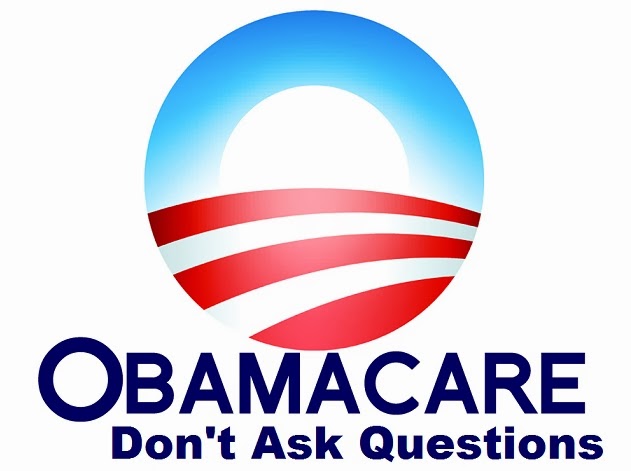Obamacare may be painful for the millions of Americans forced to change over healthcare plans, but the law is proving to be a boon for health insurance companies and other players in the healthcare sector. Naturally, unions want a piece of this action. However, there remains one little problem.
Videos by Rare
For the past five years, the mighty Service Employees International Union has been battling the smaller National Union of Healthcare Workers in union halls and in courtrooms over who will be the primary bargaining agent for California’s – and the nation’s – healthcare workers.
The latest skirmish between SEIU and NUHW came earlier this month. SEIU’s healthcare affiliate struck a deal with the California Hospital Association. The union would represent nurses and other workers at 400 hospitals throughout the state in exchange for supporting a ballot initiative to raise $6 billion a year in new healthcare funding.
By striking the deal with the hospital lobbying group, SEIU gained the backing it needed to force hospital workers to join the fold. In the process, it will cut out NUHW and other unions. NHUW called SEIU’s deal with the hospitals “treason to California’s healthcare workers” and compared the union to World War II collaborators. Declared NUHW President Sal Rosselli: “SEIU agreed to become a company union.”
NUHW has been boosting its own ranks at SEIU’s expense. In March, workers at Seton Medical Center in the San Francisco suburb of Daly City narrowly voted to decertify the SEIU local there and join with NUHW instead. The union now represents 531 workers at the hospital. SEIU is challenging the results before the National Labor Relations Board, asking the federal agency to toss out the results. Four months earlier, 157 workers at the Alameda County Jail’s medical center voted to leave SEIU and form an NHUW local.
The skirmishes between SEIU and NHUW are taking place within Kaiser Permanente, the Oakland-based nonprofit which is the nation’s largest healthcare management organization. Last May, SEIU won a vote to represent most of Kaiser’s 45,000 workers by a 5,743-vote margin.
SEIU also has the backing of the HMO’s management, which has been pleased with the union’s willingness to go along with its reductions in benefits. But NHUW still represents 4,000 workers while its chief ally, the California Nurses Association, bargains for another 17,000 on Kaiser’s staff.
Meanwhile NUHW’s success in using hardball tactics to force changes at Kaiser – including the departure of one of the HMO’s board members – has been embarrassing to SEIU, which has at times lived up to NHUW’s accusation of being too cozy with management. Back in January 2013, unconcerned about union solidarity, SEIU urged its members to cross picket lines set up by NHUW and CNA during one of their work stoppages.
SEIU-NHUW fighting offers stark contrasts in how to do labor relations. SEIU eschews the old-school industrial model of unionizing by embracing cozy dealmaking with Corporate America and government agencies. Employers allow SEIU to come in and unionize their workplaces, regardless of whether employees want collective bargaining. In turn, SEIU strikes deals with employers that ditch defined-benefit pensions and other past victories of Big Labor.
SEIU has increased its rank-and-file membership by 10 percent to become the nation’s second-largest labor union after the National Education Association, even as the rest of organized labor has seen a six percent decline. Progressives and more-traditional unionists within organized labor think SEIU’s approach violates the concept of union democracy and betrays Big Labor’s promise to workers of ever-better benefits and working conditions.
NHUW, on the other hand, is as militant as they come. Though comparatively tiny, with just 9,944 rank-and-file members, its willingness to engage in work stoppages and defend traditional union benefit packages has won it new members. The union increased membership by 16 percent between 2012 and 2013.
The smaller union garnered attention within organized labor in March 2013 when it struck a deal with California Pacific Medical Center, the second-largest hospital in the Golden State. The contract included retroactive pay increases and brought back other benefits. This proved particularly embarrassing to SEIU because it had bargained away those bennies a year earlier when it was still represented California Pacific’s staff.
But the battle between SEIU and NHUW isn’t just about differences in unionizing tactics. It is also personal. NHUW President Rosselli was once the boss of United Healthcare Workers West, an affiliate of SEIU. Six years ago, Rosselli resigned amid a power struggle between himself and Andy Stern, the parent union’s notorious president.
Stern had placed the affiliate under SEIU’s trusteeship to squelch dissent from Rosselli and more-militant rank-and-file members. Dave Regan, who now runs the affiliate and chairs the SEIU committee in charge of healthcare organizing, is a protégé of Stern who was also one of Rosselli’s rivals.
It was Rosselli’s decision to leave SEIU and start NHUW that led to four years of litigation between the two unions. SEIU spent $10 million accusing Rosselli and 15 other NHUW founders of using SEIU resources to enrich themselves to the tune of $25 million as well as improperly organizing against the union during their day jobs to launch the union and oppose SEIU’s efforts.
A federal jury only found Rosselli and his allies liable for misuse of day jobs and awarded SEIU just $750,000, for a loss of $9.25 million. Of course, SEIU proclaimed in a press release that the verdict proved that Rosselli and NHUW engaged in a “scheme to sabotage the union”.
The unions have good reason to spar. America spent $2.5 trillion on healthcare in 2009, according to the Centers for Medicare and Medicaid Services – and will nearly double to $4.6 trillion on healthcare by 2020. With two out of every five dollars of healthcare spending going to hospitals, nursing homes, and home care workers, more money means more workers and new opportunities for unions to grow their ranks.
SEIU is particularly concerned about membership numbers. The union saw a slight membership decline in 2013 after 13 straight years of growth. It thinks healthcare workers could change that.
But SEIU’s expansion in healthcare is unwelcomed by progressives within organized labor who want to still hold on to pensions and other traditional union benefits. Its ambition also means skirmishing with other unions, including the American Federation of Teachers (which counts nurses both in schools and hospitals among its 1.6 million members), and the 91,753-member CNA, which has now allied itself with NHUW to beat back SEIU.
Given the stakes and the grudges, SEIU and NHUW will continue battling it out for years to come. Taxpayers, consumers, and maybe even workers will end up worse for it.



